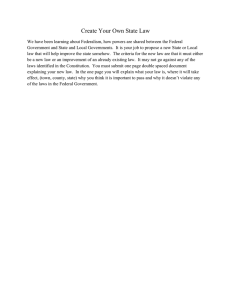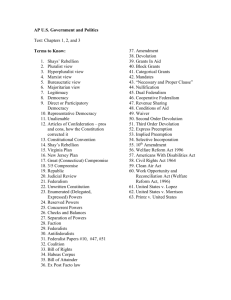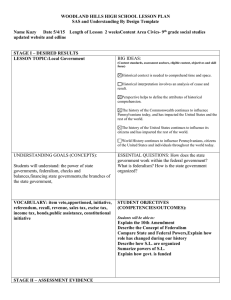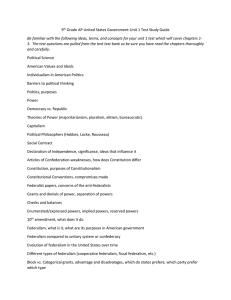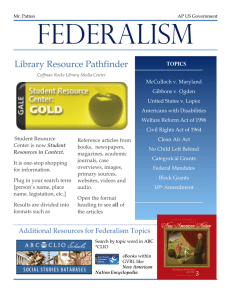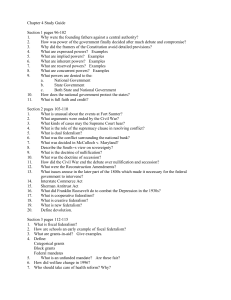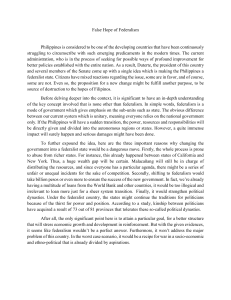AP Gov.-Ch. 3 Study Questions Define federalism and describe the
advertisement
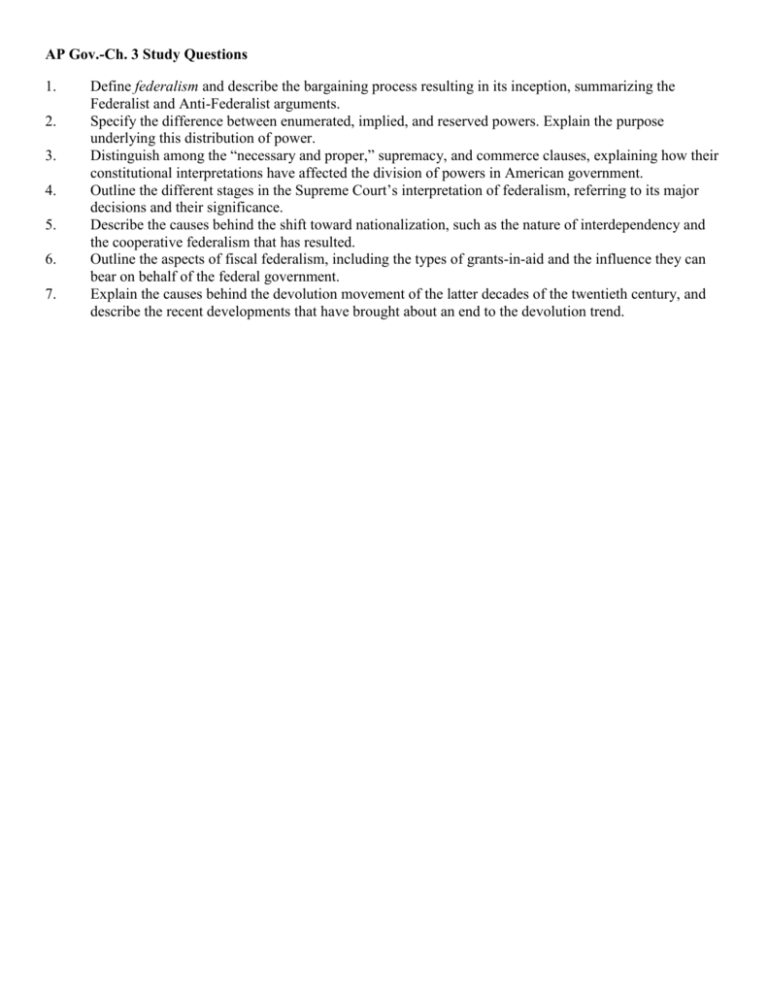
AP Gov.-Ch. 3 Study Questions 1. 2. 3. 4. 5. 6. 7. Define federalism and describe the bargaining process resulting in its inception, summarizing the Federalist and Anti-Federalist arguments. Specify the difference between enumerated, implied, and reserved powers. Explain the purpose underlying this distribution of power. Distinguish among the “necessary and proper,” supremacy, and commerce clauses, explaining how their constitutional interpretations have affected the division of powers in American government. Outline the different stages in the Supreme Court’s interpretation of federalism, referring to its major decisions and their significance. Describe the causes behind the shift toward nationalization, such as the nature of interdependency and the cooperative federalism that has resulted. Outline the aspects of fiscal federalism, including the types of grants-in-aid and the influence they can bear on behalf of the federal government. Explain the causes behind the devolution movement of the latter decades of the twentieth century, and describe the recent developments that have brought about an end to the devolution trend.

